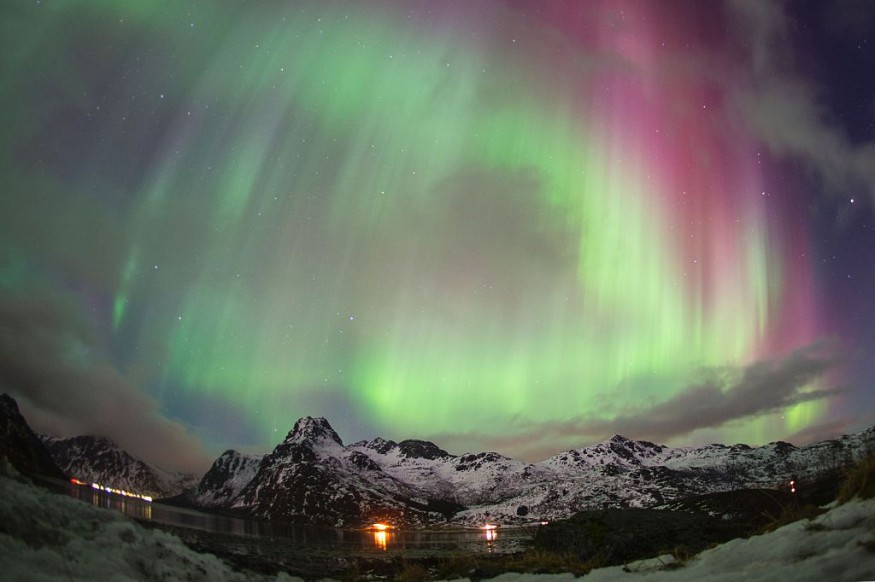A powerful solar flare from an erupted coronal mass ejection (CME) near the sun's surface has been traveling through space and set to arrive at planet Earth today.
However, a Storm Watch for a Moderate Geomagnetic Storm has been canceled by forecasters at the Space Weather Prediction Center (SWPC), as well as a G1 Geomagnetic Storm Watch that was in effect for Thursday.
The outburst could have sparked hours of auroras from the Arctic Circle into northern United States and as far south as New York. Tony Phillips reports that the burst came from the sunspot called AR2936 and is "especially long-lasting."
According to LiveScience, the outburst is a type of CME known as a "halo CME", which appears larger than the sun in coronagraph images obtained by sungazing spacecraft as the solar particles approach Earth, like a circular halo.
The CME erupted in the early hours of Saturday morning, January 30, into space following an M1-class solar flare - a medium-size space weather event that can cause temporary radio blackouts on Earth.
No Geomagnetic Storm Watches in effect on Earth now

The National Oceanic and Atmospheric Administration (NOAA) forecasts the solar particles from this halo CME to hit Earth starting Wednesday.
However, it seems like the forecasted space weather event will be impactful enough to warrant any Geomagnetic Storm watch for now, as per Weatherboy.
"This flare was associated with an asymmetric, full halo coronal mass ejection (CME) as observed in NASA/SOHO LASCO coronagraph imagery," the SWPC reported.
"Multiple analyses by SWPC forecasters indicated an approximate CME speed of 662 km/s and an at Earth arrival window as early as late Feb 1 to early Feb 2 ET. Forecast confidence in an Earth component to this CME is fair, while lower levels of confidence exist for intensity and arrival timing."
The G2-class geomagnetic storm, originally forecast for February 2, is a moderate class, "low hazard" geomagnetic storm which could have generated aurora as low as New York to Wisconsin to Washington State.
Astronomers say the event is seeing the current solar cycle they call Solar Cycle 25, sun's new activity phase which is expected to peak in 2025 but will generally be a "pretty quiet", Space.com reported.
Impact of a G2 geomagnetic storm
As per NASA's Space Weather Prediction Centre, the area of primary impact for G2 storm will be poleward of 55 degrees Geomagnetic Latitude.
This means power grid fluctuations can occur in this region while high-latitude power systems could experience voltage alarms, and long-duration storms may cause transformer damage.
Meanwhile, satellite orientation irregularities could occur in space, with an increased drag on low Earth-orbit satellites affecting orbit predictions. Corrective actions to orientation may be required by ground control. In addition, Communications may also be hampered.
Elsewhere, HF radio propagation can fade at higher latitudes, and Mother Nature may light up the skies more south than usual; spilling out of the Arctic Circle into northern-tier U.S. states such as New York, Minnesota and Washington.
© 2025 NatureWorldNews.com All rights reserved. Do not reproduce without permission.





